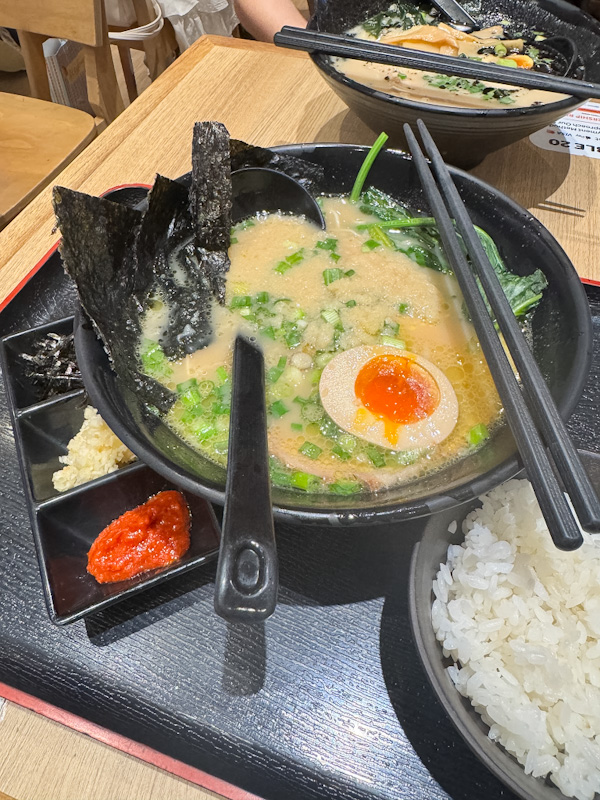WHAT WE ATE
- Tokusei (Special) Shio Ginger Ramen – 70/100, Tokyo, 10 April 2025
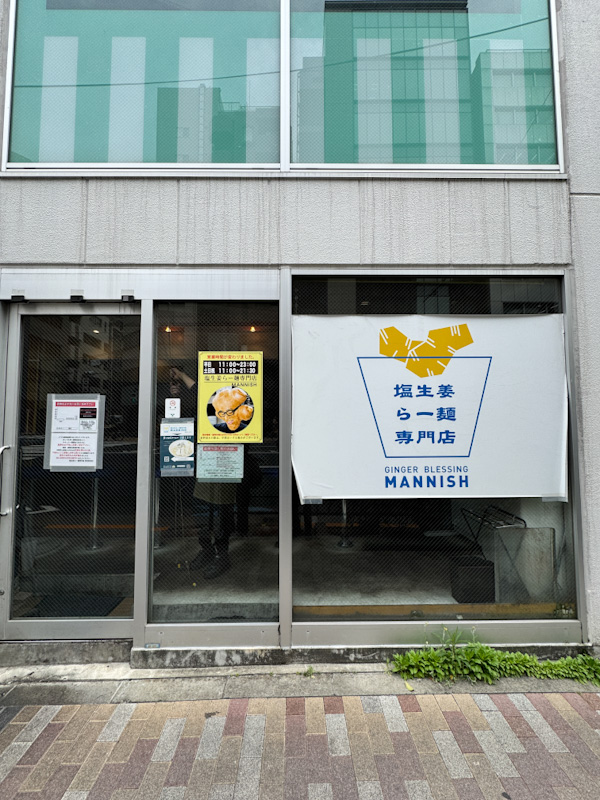
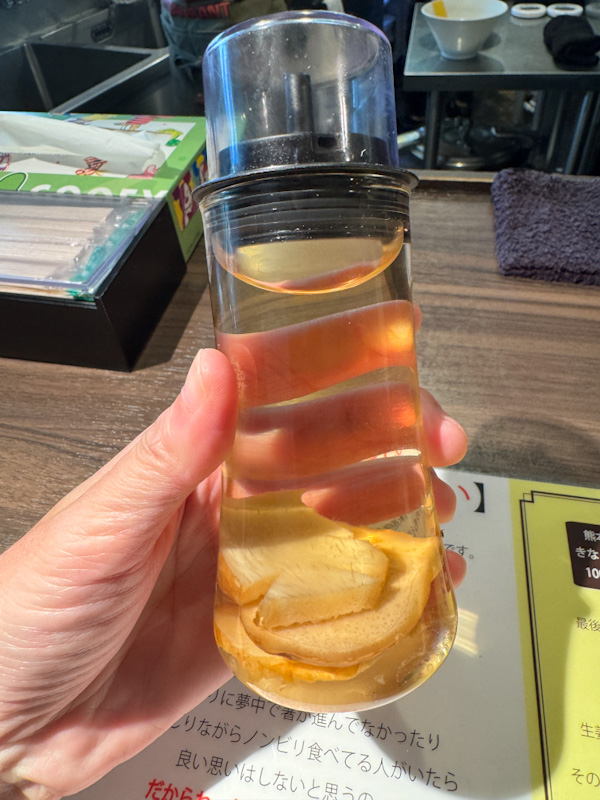
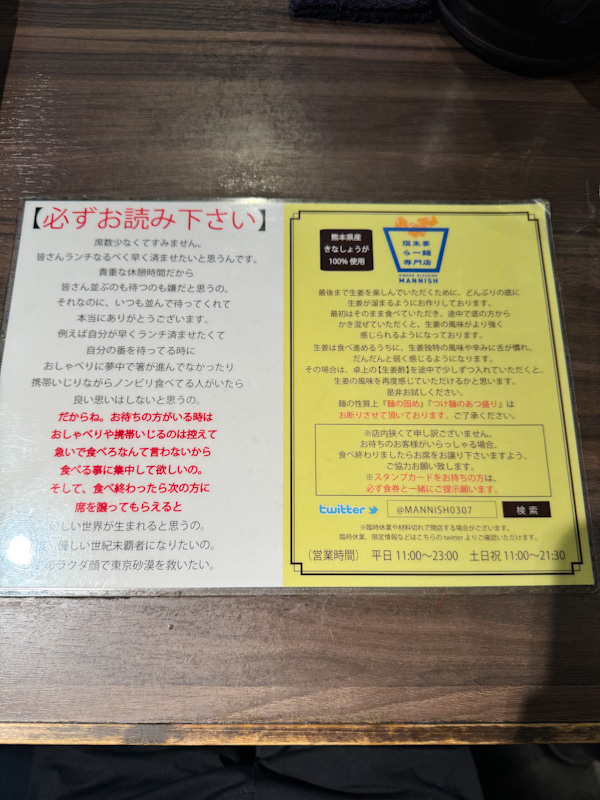
Salt & Ginger Ramen MANNISH is a well-loved ramen spot in Tokyo that’s carved out a name for itself with its unique take on shio (salt) ramen. What sets MANNISH apart is its bold use of fresh ginger, which adds a bright, refreshing kick to the otherwise light and savory broth. The ramen here isn’t your typical rich, fatty bowl—instead, it leans toward a cleaner, more aromatic flavor profile that’s surprisingly satisfying and especially comforting during colder months.
While it hasn’t received formal accolades like Michelin stars or TRY awards, MANNISH has built a loyal following among locals and ramen fans in the know. The original shop, tucked away near Awajicho Station, has a minimalist vibe and counter-style seating, allowing the focus to stay on the food. It’s one of those places that quietly impresses with consistency and character, making it a worthwhile stop if you’re in the area and looking to try something a little different from the usual tonkotsu or miso styles.
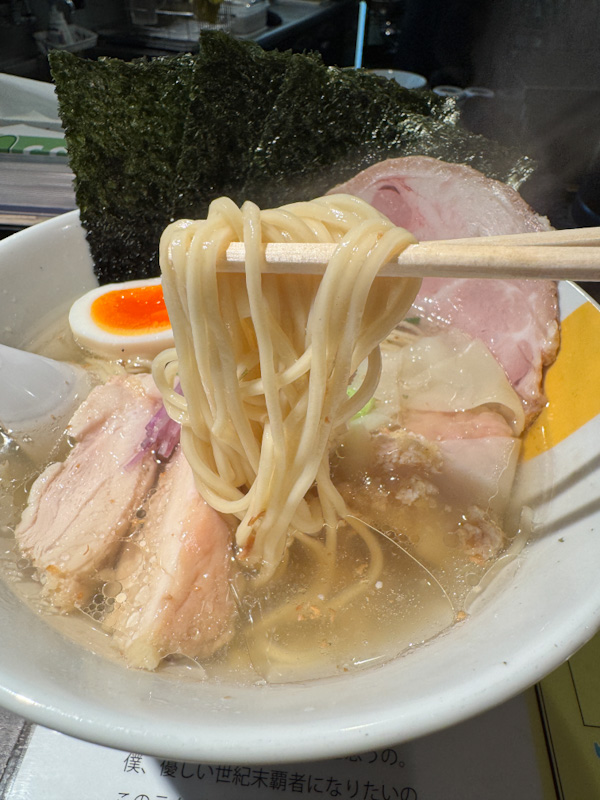
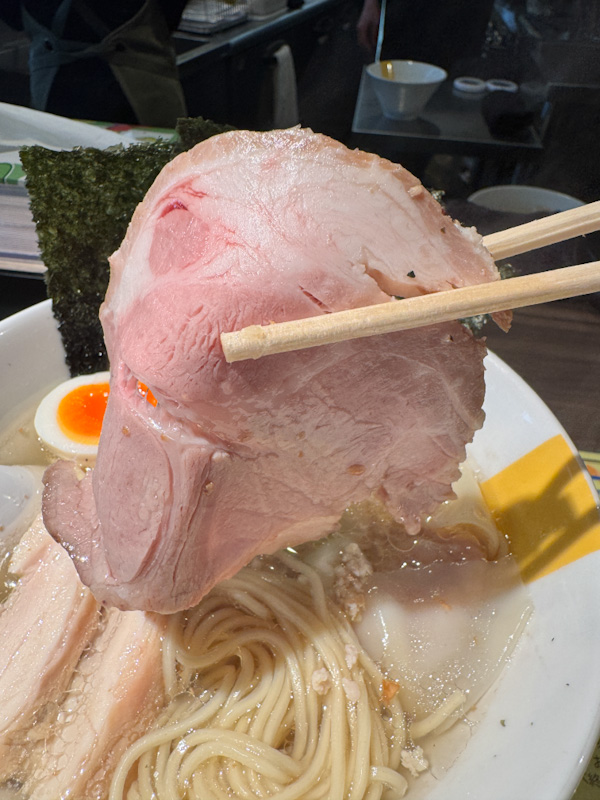
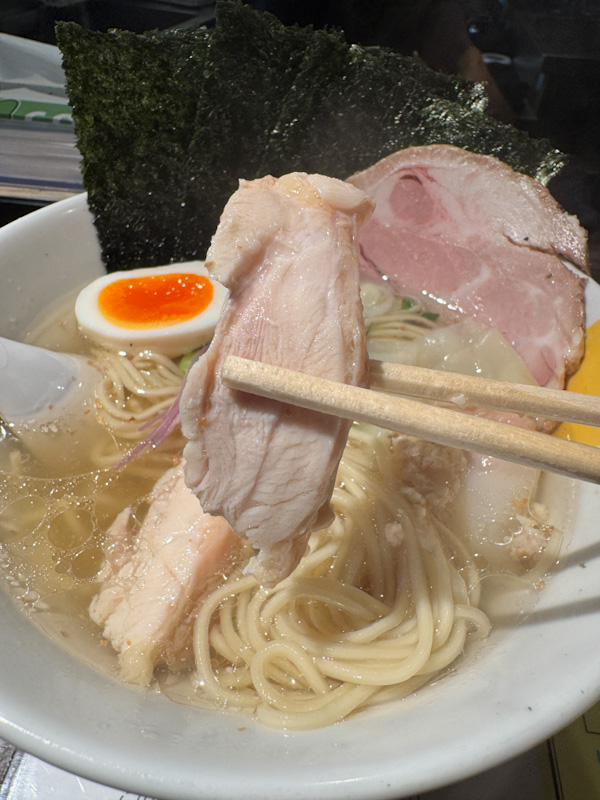
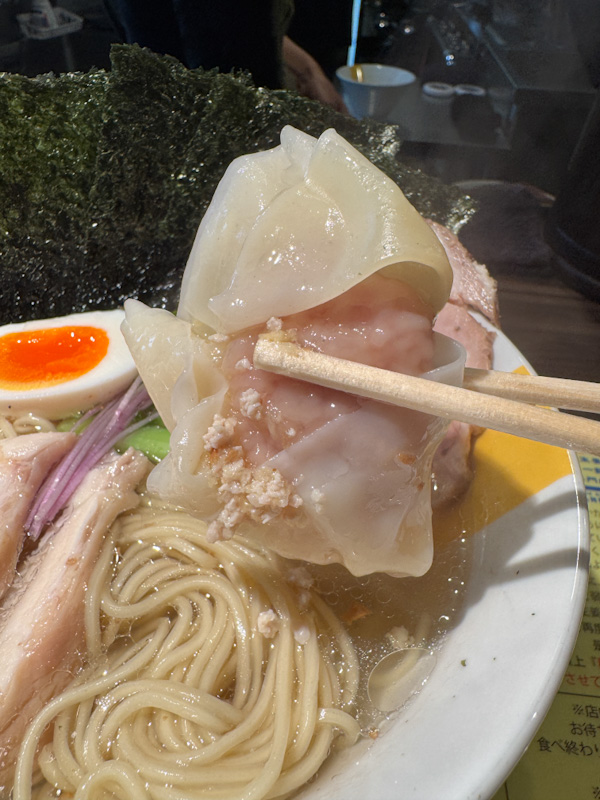
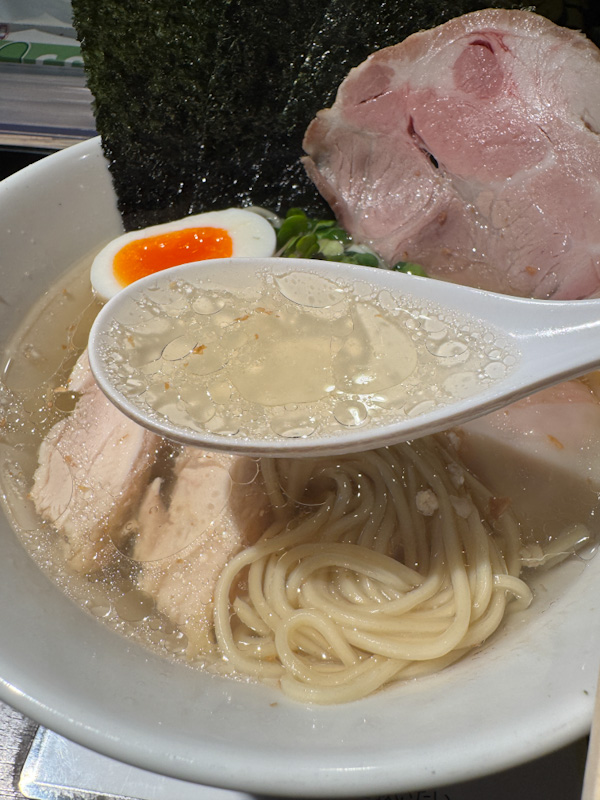
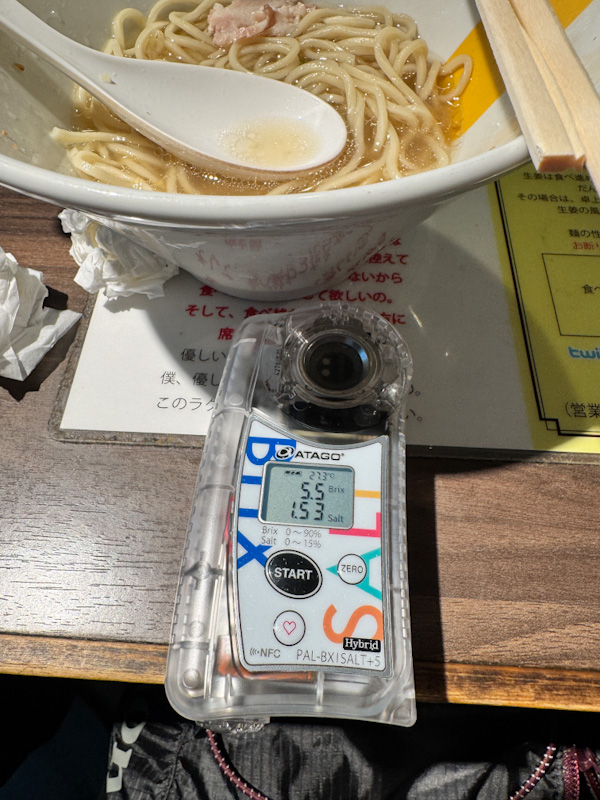
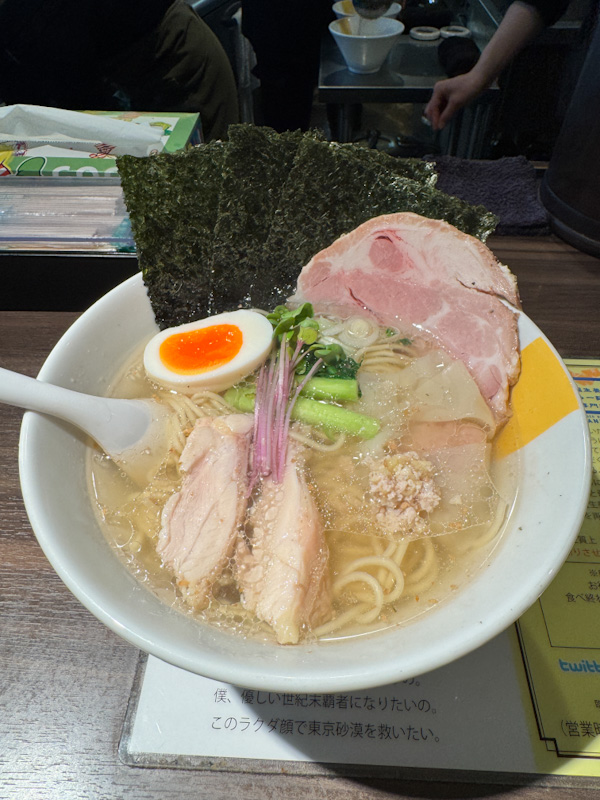
Tokusei Shio Ginger Ramen: 75/100
Noodle: 25/35
These medium-thin, straight noodles are firm and springy with a smooth slurp. They’re on the higher hydration side, giving a chewy, almost “mochi mochi” bounce. There’s a faint wheat taste, but it’s not very distinct. Unfortunately, the noodles seem to leach into the soup over time, giving the broth a more pronounced alkaline tang the longer you wait. Texture-wise, they’re okay, but the aftertaste knocks a few points off. Not the most memorable noodles overall.
Soup: 30/35
Now the soup is where this ramen really shines. It’s light, clean, and refreshingly crisp, with a savoury base carried by warm, gently aromatic ginger notes. The ginger here isn’t too sharp or spicy—it’s soft, sweet, and soothing. It gives the broth a comforting warmth without overpowering the rest of the bowl. A solid example of how subtle flavours can still make a strong impression.
Pro tip: There’s a note on the table explaining that the bowl is intentionally designed to let the ginger settle at the bottom. This way, the spiciness builds gradually as you eat. Once you’re used to the flavor, give it a stir to bring out the bolder, more intense notes of ginger.
Meat: 10/20
The tokusei version throws in a good variety of proteins, but texture-wise, it’s a bit of a mixed bag:
- Chicken chashu: Juicy and naturally sweet, but a little on the tough side. Flavour’s great, but the bite might not be for everyone.
- Pork chashu: Also quite firm, bordering on tough, with fatty parts that were stringy rather than melty. Nicely marinated, though—light, savoury, and lets the pork flavour come through.
- Wontons: Easily the highlight. Soft, silky skin, juicy filling, and a sweet-savory profile with a bold gingery punch that lifts the whole dish. These add dimension and balance to the bowl.
Topping: 10/10
Creative and thoughtful toppings round out the dish:
- Pea sprouts with reddish stems: Mild vegetal crunch that adds freshness and color.
- Leafy vegetables: same as the pea sprouts, they add a nice freshness and mild bitterness to the meal.
- Negi: Classic aromatic sharpness to brighten things up.
- Minced spice: A gingery, savoury surprise that deepens the broth’s warmth and adds a gentle meaty heft.
- Half marinated egg: Perfectly done—runny yolk, smooth whites, and a subtle truffle note that adds a little touch of luxe.
Overall: This is a delicate, thoughtful bowl with a warming ginger twist that’s perfect for when you’re craving something lighter but still flavourful. The soup and toppings work harmoniously, with the wontons and egg standing out in particular. The letdown comes from the noodle and meat textures—both of which could’ve been much better. If those were improved, this could’ve been a showstopper. Still, for fans of ginger-forward, clean-tasting ramen, it’s definitely worth a try.
DISCLAIMER
One man’s meat is another man’s poison.
Find out more about our palettes and how we evaluate our ramen here. 😉

